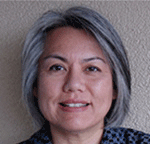¶ 1 Leave a comment on paragraph 1 0 Why address data curation in a journal that centers on the “use and theory of archives and special collections in higher education”? The five works collected in “Curating the Digital, Curating the Analog,” the latest installment of “Archives, Remixed,” connect archival theory, practice, and pedagogy to data curation. Acts of selecting, storing, and making content available for use are synonymous in analog special collections and data archives, but in each professional context, this set of activities has developed independently. Both domains would benefit from the other’s perspectives and experiences. At the same time, primary source materials are converging in new forms of research output, regardless of their category as datasets housed in data archives or as born-digital correspondence housed in a special collection. These and other conditions of data creation and record keeping make the case for a broad and inclusive consideration of data curation. As the contributions herein suggest, special collections libraries and archives need to shift from passive collecting practices to strategies that engage proactive stakeholders in the life cycle of information, and they need to begin to actively collect digital information. Data curators should draw upon traditional archival approaches to shape long-term stewardship. Once material is in the custody of any repository, linkages to other repositories should be created to enable new forms of inquiry and data manipulation.
¶ 2 Leave a comment on paragraph 2 0 In “Curating the Digital, Curating the Analog,” we offer an eclectic set of contributions intended to challenge, edify, reinforce, tease out, and contextualize what it means to do data curation across a range of domains. At the same time, readers will see there are certain strands, in the form of ideas or conceptual approaches, that tie the articles together. Long-held archival concepts, workflows, and roles demand evaluation and revision in order to adapt to born-digital objects. Plumbing the historical and theoretical underpinnings of archives in his article, Jefferson Bailey revisits the principle of respect des fonds, in effect turning this age-old principle on its head in a consideration of how to curate born-digital materials. In doing so, he calls attention to how users interact with online archives and how that differs markedly from what takes place in an analog environment. These and other issues of use and users that Bailey identifies also resonate with data curation pedagogy and practice, which Palmer, Weber, Muñoz, and Renear examine in their article. As they assert, understanding “research cultures” is foundational to data curation and to the “purposeful work” curatorial methods entail. The data curation curriculum that Palmer et al. propose takes an integrative view, combining established concepts of curation with tenets that are germane to “library, archival, and computer science.” In addition to research cultures, the development and management of collections and the representation of information are also key to the practice of data curation. The former reflects the heterogeneity and complexity of data and its life cycle, while the latter draws upon notions of identity, ontology, and provenance for organizing and characterizing information.
¶ 3 Leave a comment on paragraph 3 0 In their contribution, echoing Palmer et al., Andrew Asher and Lori Jahnke delve into the research culture of ethnographers, and thus into researchers’ perspectives on data curation, especially the collection and management of data. They address the ethical conundrums that can infuse certain aspects of data collection and sharing in the realm of ethnographic research, particularly in terms of fieldnotes, where the cultural, personal, and private are at obvious cross-purposes with the notion of public access. Asher and Jahnke also call out what might be described as a missing link in data management for researchers—programmatic education about it.
¶ 4 Leave a comment on paragraph 4 0 Shades of what Bailey and Palmer et al. argue in their articles, particularly with regard to user interaction, user communities, and, as the latter authors say, the “formal characteristics of information objects that carry digital data,” appear in Rachel Donahue’s contribution. Employing the artful device of comics, Donahue reports on a study of the digital preservation requirements for a highly popular video game about pioneer life in the West. With the aim of developing a curatorial method that could be applied to collections of games of similar formats, the study documented the significant properties of the video game and learned from players (users) what was important to preserve and retain about the game. Through her comic, Donahue essentially captures curation in action.
¶ 5 Leave a comment on paragraph 5 0 Many of the topics regarding roles, responsibilities, archival practices, and data representation that arise in the aforementioned articles come together felicitously in the conversation between Kristin Yarmey and Lynn Yarmey, two practitioners who are sisters. Kristin, a digital services librarian, and Lynn, a data curator at a predominantly federally funded research center, engage in an informal dialogue. They discuss the ways in which their jobs converge because of shared objectives and diverge because of the different contexts of their work. Yarmey and Yarmey engage in a dialogue that also evokes the integrative view fleshed out by Palmer et al. Through their dialogue, they show how data curation in practice refers back to the disciplines of library and information science, archival studies, and computer science.
¶ 6 Leave a comment on paragraph 6 0 The pieces gathered in “Curating the Digital, Curating the Analog” reflect recurring, pivotal ideas. One such idea is a keen appreciation for users of archives and the research communities to which they belong. Collectively, our authors advocate for close collaborations between archivists, data curators, and researchers. They emphasize education in data curation, suggesting it is as important to the researchers who collect data as it is to the practitioners who care for it. The representation, context, and description of data, all of which are crucial to data reuse, also constitute a pronounced theme. In essence, this issue explores the various roles, perspectives, and practices grounded in the commitment to preserve data, for the purpose of making it discoverable, accessible, and usable over the long term. It presents a narrative about data and data curation in archival, educational, research, and library settings that we think will prove relevant to readers of Archive Journal.







